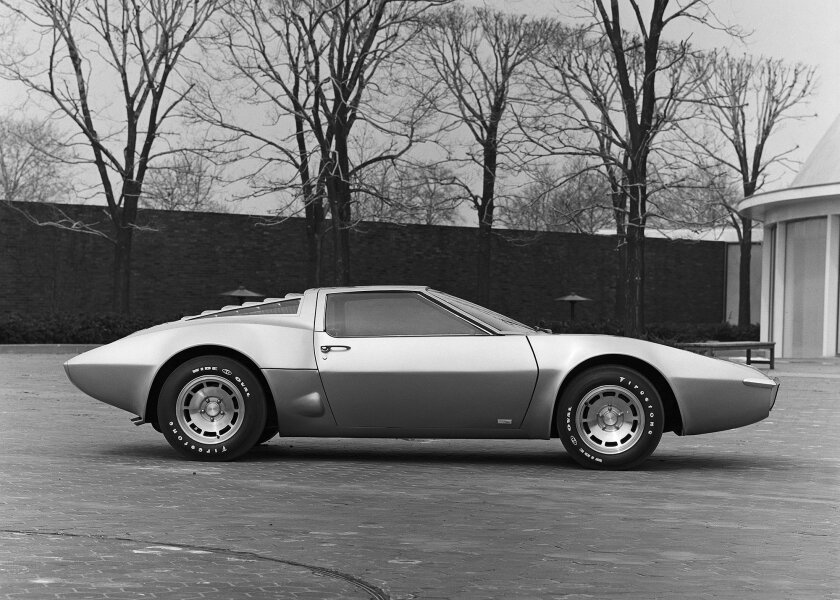The Aerovette XP-882 started life as Experimental Project 882 in the late 1960s, culminating in two prototypes in 1969. General manager, at the time, of Chevrolet John DeLorean, however, nixed the project over lead design engineer Zora Zora Arkus-Duntov’s objections, calling it impractical and costly. But one of those prototypes was quickly dusted off and shined for the 1970 New York Auto Show after Ford had announced plans to sell the DeTomaso Pantera in Lincoln dealerships, potentially making Chevy look less exciting without a supercar of its own.
Several versions of the XP-882 would then appear through the early 1970s, with DeLorean authorizing work on the XP-882’s Aerovette successor, XP-895 and later the XP-897GT. Both of those were unveiled in 1973.
1973 was a pivotal year for the United States with the Vietnam War beginning to find closure, the Sears Tower finishing construction to become the tallest building in the world, and the Watergate Scandal breaking. Amongst all of that were two more Corvette-inspired concepts from General Motors.
Both were innovative and extremely interesting, though neither of them would ultimately come to fruition until much later. The 1970 XP-882 set the stage as an aerodynamic, beautifully-designed concept whose lines and form would heavily influence the next generation of production Corvette models. Though its mid-engine layout would not be adopted until decades later with the current-generation (C8) ‘Vette, the XP-882 was the beginning of Aerovette concepts that rocked the sports car world.
The XP-882 was powered by a tuned and transverse-mounted V8 engine, but that was considered a temporary measure with the next three prototypes having something different.
The XP-895 that followed the 882 featured a four-rotor Wankel rotary engine that produced 420 horsepower. Debuting in 1973, this version of the Aerovette was met with much fanfare by the automotive press. That same year, Chevrolet also showed off the XP-897GT, a nearly identical version of the Aerovette that featured an aluminum alloyed body and a two-rotor Wankel engine. While the metallic body never took off, the idea of a Wankel-powered Corvette was compelling enough that Tom Falconer purchased the 897GT concept (sans its engine) and refitted it with a Mazda-made 13B rotary engine.
The XP-895 was brought back out to the show floor in 1976, this time having had its Wankel four-rotor replaced with a 400ci Chevrolet V8. It was at this point that the car officially got the name “Aerovette” and was slated for production as a 1980 model. With folding gullwing doors, which at the time were the hallmark of every concept car and supercar, the Aerovette was considered a masterpiece of American sports car design.
We know now, however, that the heady days of the late 1970s were fickle and the slated 1980 production never happened. Instead, engineers, designers, and bean counters at GM found that a front-engined Corvette with a smaller and more fuel efficient engine and regular swing-forward doors would be more suitable to mass production and consumption. So the Aerovette was dropped and a sorta-new-generation (same as the old generation) Corvette was introduced instead. A slight restyling and a 350ci engine were used in the C3 for two more years, though the 440 also appeared about that time to cater to performance junkies.
The Aerovette itself was put into GM’s museum, but its styling cues were clearly a halfway point between the C3 and the C4 generations of the ‘Vette. It’s interesting design, mid-engined layout, and experimental use of the Wankel engine were clear signs that General Motors was not just lounging around in its engineering departments. But it wasn’t until 2020 that the mid-engine envisioned by Zora Arkus-Duntov and his team would come to fruition for the Corvette.











